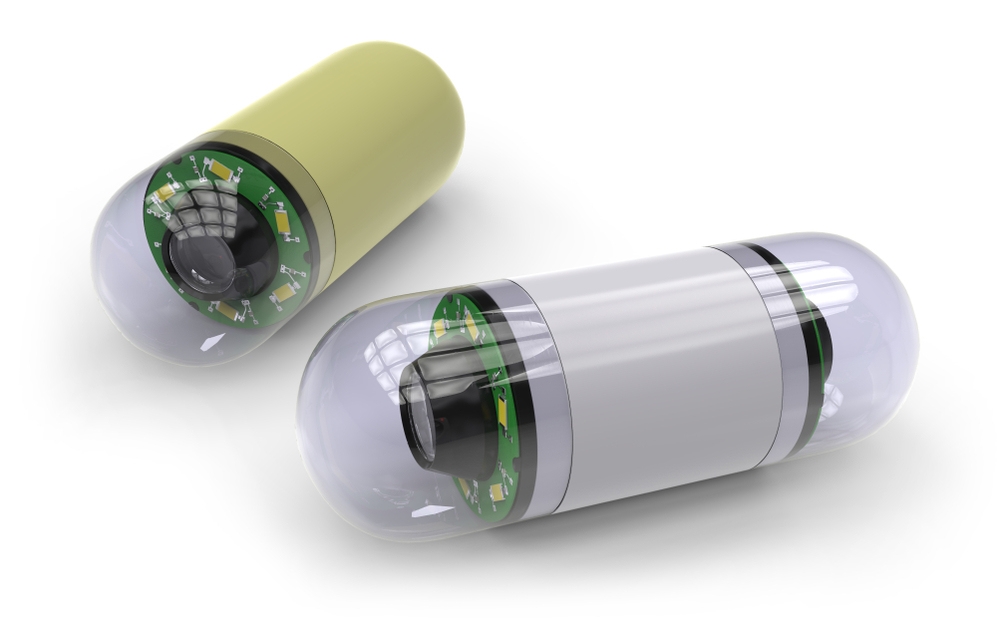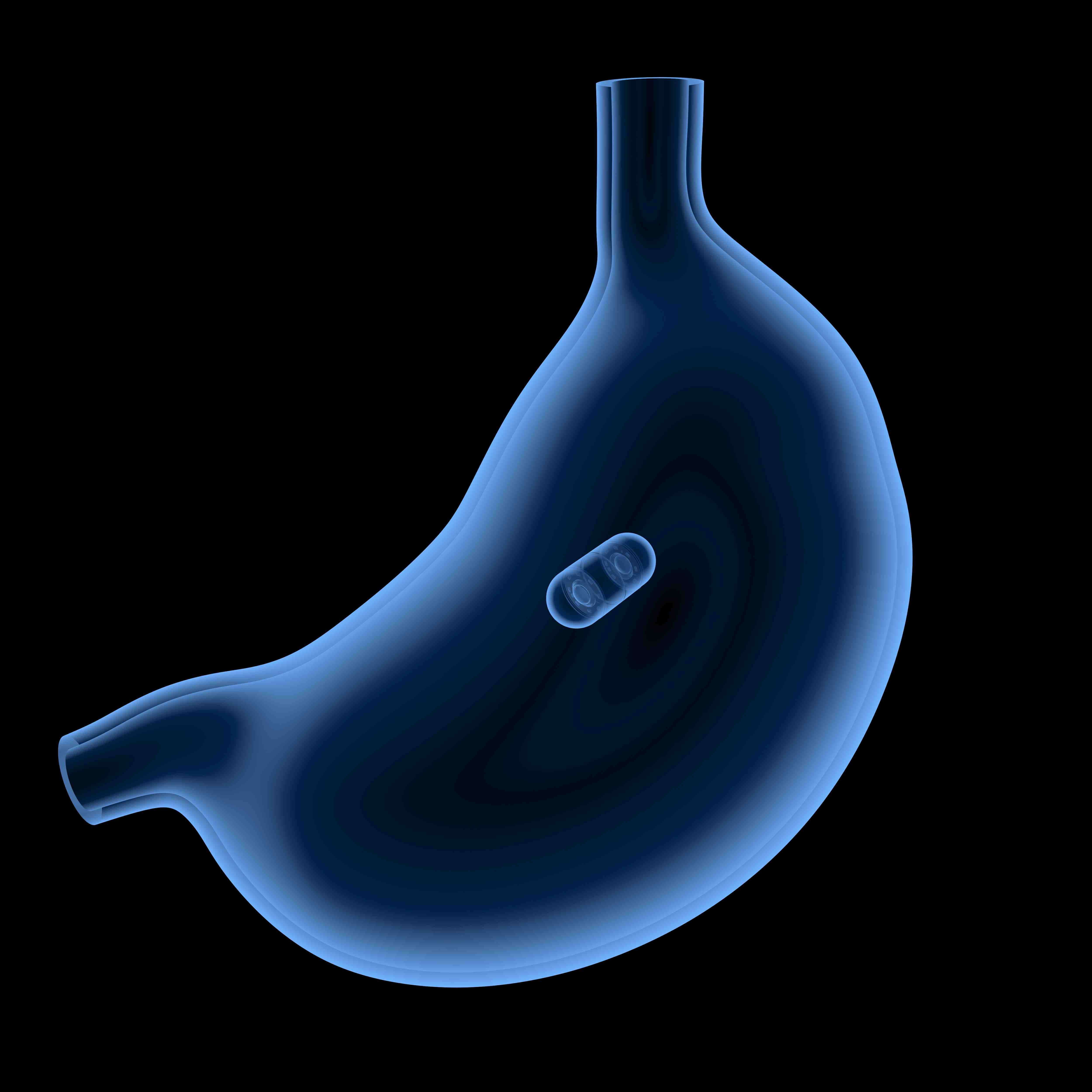
The human digestive tract has an upper mouth and an lower anus. This natural opening provides convenience for doctors to observe the pathological changes of the digestive tract. So we have gastroscope and colonoscope, which can observe the conditions of esophagus, stomach and colon.
However, the adult digestive tract has 5 ~ 6 meters long, the general gastroscope can only see a part from esophagus to duodenum, colonoscope can only see large intestine. The longest small intestine in the middle, but there is no good way to observe it.
Fortunately, the incidence of cancer in this small intestine, which is not easy to observe, is much smaller than that in the stomach and colon. However, in case something goes wrong with the small intestine, how can doctors observe it?
At that time, a great invention appeared: capsule endoscope.
What is a capsule endoscope?
As the name implies, a capsule endoscope is a capsule that can take photos, plus a portable transmission device that is carried on the body to receive images.
During the examination, after confirming that there was no problem with the equipment, the patient swallowed the capsule like taking medicine.
1. What can such a powerful capsule do?
Capsule endoscopy is currently mainly used to observe the situation of small intestine and is suitable for diagnosing unknown digestive system diseases, such as:
- When hematochezia, abdominal pain and other symptoms occur and gastrointestinal endoscopy is normal; When small intestinal diseases such as small intestinal tumors and small intestinal angiopathy are suspected.
Compared with gastrointestinal endoscopy, capsule endoscopy has the most obvious advantage that there is no pain in the whole examination and there is no difference between feeling and taking a pill.
2. How to take it out after swallowing it?
From the moment it enters the oral cavity, the capsule endoscope will take pictures at a speed of 2 pictures per second, and take pictures all the way under the impetus of digestive tract peristalsis, and the images will be transmitted to the recorder in real time.
The battery of capsule endoscope can usually last for 6-8 hours. At this time, under normal circumstances, it has passed through the small intestine to the large intestine, waiting to be discharged from the body with stool. Its mission is basically over.
When defecating in the following day or two, the patient should pay attention to whether the capsule has been discharged, but there is no need to recycle it, because the capsule endoscope is disposable.
3. Precautions for Capsule Endoscopy
- The day before the examination, safe laxatives should be used to clean the intestinal tract and liquid should be eaten for dinner. On an empty stomach on the day of examination, just swallow the capsule. The capsule naturally advances with the peristalsis of gastrointestinal tract and takes images.

Instead of gastroscopy?
Some people will ask, since capsule endoscopy can take pictures of the small intestine from the oral cavity and gastrointestinal endoscopy is so painful, why not replace gastrointestinal endoscopy with capsule endoscopy?
In fact, capsule endoscopy also has its own shortcomings:
1. Expensive
Because capsule endoscope is a disposable article, there is no possibility to spread various pathogens. But at the same time, it also means that the price is high. At present, the price of domestic capsule endoscope is about 5,000 ~ 10,000 yuan.
2. Can’t see it all
This is the most important disadvantage of capsule endoscopy.
Motion in the digestive tract is passive, For example, in the esophagus, With swallowing the capsule endoscope will pass through the esophagus and reach the stomach in a few seconds, so its observation of the esophagus is very unreliable. In the stomach, too, the stomach is like a cloth bag, and the capsule endoscope completely moves with the peristalsis of the stomach, which is likely to produce a large number of blind areas. At present, the capsule endoscope can only observe 20% ~ 30% of the area in the stomach.
As for colonoscopy, it is mainly used to observe the colon. Most capsule endoscopes can only reach the beginning of the colon within the use time, and the observation effect on the colon is very limited.
At present, the role of capsule endoscopy in gastric and colon examination is only to take a look at the stomach and colon with it. If there are obvious lesions, they can also be found, but overall the missed detection rate is still relatively high and cannot meet the requirements of clinical application.
Therefore, capsule endoscopy cannot replace traditional gastrointestinal endoscopy at present.
3. No biopsy can be taken
This is also an important shortcoming.
When gastrointestinal endoscopy finds a lesion, the examiner takes the lesion tissue through biopsy forceps to carry out pathological examination to determine the nature of the lesion. Capsule endoscopy cannot do this.
4. Risks
Since the movement of the capsule endoscope is completely passive, when there are structural abnormalities in the digestive tract, such as large ulcers, or the intestinal wall protrudes outward to form diverticula, the capsule endoscope is likely to get stuck in the ulcer or diverticula and cannot get out. At this time, other means such as traditional endoscope or even surgery are required to take out the capsule endoscope.
In addition, there are some patients who are not suitable for capsule endoscopy: for example, for patients with colon cancer causing intestinal lumen stenosis and Crohn’s disease complicated with ileocecal stenosis, capsule endoscopy is at risk of being stuck in the stenosis of the lesion and unable to pass through.
The Future of Capsule Endoscopy
As a painless and easy-to-operate examination method, capsule endoscopy has been continuously developing. With its shortcomings, it can be overcome one by one through the development of technology.
We have reason to believe that in the future, there will be capsule endoscopes that can control the operation direction and take biopsy, which can replace gastrointestinal endoscopy.
At that time, the patient may be able to complete the endoscopic examination of the whole digestion at home. Technology will greatly improve our life and medical treatment.
Responsible Editor: Zhang Jingyuan
